You may or may not know, but Makita has two new reciprocating saws available. Now as much as these are the same, there is one big difference. The XRJ05Z is an 18V saw and the XRJ06Z is a 36V saw. Believe it or not, both saws run off their 18V platform. So you may be scratching your head and wondering how does a 36V run off an 18V platform? Simple, (Well maybe not from an engineering perspective), but from an understanding perspective, it’s not complicated. The 36V Makita reciprocating saw uses 2-18V batteries. Looking around online and hearing from our readers, I have seen and heard mixed reviews about this. In my opinion, I think it’s a pretty cool idea and concept, which I will get into later. First, I want to give you a quick rundown of the saws so you have a little background on this first. Besides voltage and a couple small items on the tool, they are basically identical saws.
Makita built their saws around a brushless motor, which means they are more efficient and should have a longer life. On the top of the saw, there is a push button 3 selector switch. In the middle positions, you can lock out the tool. For the other two positions, you can select the speed, high and low. On low, you get a variable speed of 0-2,300 spm and on high, you get a variable speed of 0-3,000. These saws feature a long stroke length of 1-1/4″. Also, both have a LED built into the front of the saw. In regards to weight and length, there is a subtle difference between the two. The 18V weighs 8.2 lbs and has a length of 17-1/4″, while the 36V is 2 lbs heavier at 10.2 lbs and a little longer at 17-3/4″.
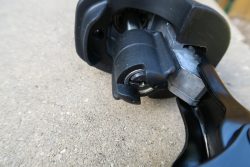 Besides the power of these saws, there are a couple of features I love about them. First, is the blade locking mechanism. I love how the blades lock into these saws, you can see on the video below. The way the blade locks into the saws means that there is less of a chance the blade will pop out under heavy conditions. I have seen plenty of reciprocating saws that once you really get down and dirty with the saws, the blades easily come out, well not with the Makita reciprocating saw. This is a locking system they have had for a long time, so they are tried and true. Another great feature about these saws is the vibrations. Now I am not saying they are 100% eliminated, but the design of the saws with their refined crank mechanism reduces vibrations. When you are using this type of tool, you will always get a lot of vibrations, but Makita does a great job reducing the amount that is transferred to your hands and arms. The third item is the electric brake. Once you take your finger off the trigger, the saws stops on a dime. This is huge for safety reasons. How many times has your arm been tired or cutting in an awkward position? You cut through the material and the saw drops by your side. With the braking system, you reduce the risk of accidentally cutting your leg.
Besides the power of these saws, there are a couple of features I love about them. First, is the blade locking mechanism. I love how the blades lock into these saws, you can see on the video below. The way the blade locks into the saws means that there is less of a chance the blade will pop out under heavy conditions. I have seen plenty of reciprocating saws that once you really get down and dirty with the saws, the blades easily come out, well not with the Makita reciprocating saw. This is a locking system they have had for a long time, so they are tried and true. Another great feature about these saws is the vibrations. Now I am not saying they are 100% eliminated, but the design of the saws with their refined crank mechanism reduces vibrations. When you are using this type of tool, you will always get a lot of vibrations, but Makita does a great job reducing the amount that is transferred to your hands and arms. The third item is the electric brake. Once you take your finger off the trigger, the saws stops on a dime. This is huge for safety reasons. How many times has your arm been tired or cutting in an awkward position? You cut through the material and the saw drops by your side. With the braking system, you reduce the risk of accidentally cutting your leg.
A couple other important features to talk about is that this saw has a tool-less shoe adjustment. Just lift down a lever and you can adjust your shoe length. Another feature is the tool hook or tool hanger. You can see on top of the saw, there is a metal hook that you can use to hang your saw up. You can fold it away when not in use. You can hang it off your workbench, a rafter or any other local area.
Digging into the Makita 36V
Now that you know a little bit about these saws, I want to cover their 36V option and how it works. As I said before, I have read things online and would like to clarify the 36V. Makita is coming out with more and more tools that are based off their 18V platform, but they run two batteries making it a 36V tool, so this is something we will be seeing a lot of. We already are seeing it on their OPE and higher demand tools.
So here is my take on the 36V. I love this idea. I love the fact that if I am a user who needs more performance for my jobs, I can pay a little more and get a 36V tool, with 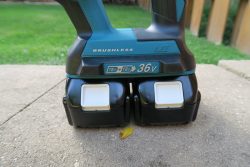 two key benefits (Besides performance). First, I am not investing in a new battery platform. My existing 18V that I already own, will give me great permanence in a tool. Not only huge cost savings, but also savings from hassles. I don’t have to worry about extra chargers, taking up extra outlets or carrying around more stuff. Second, since I am using 18V batteries, my charge time is still the same. I get a quick charge, I don’t increase my charge time as I would with a bigger 36V battery.
two key benefits (Besides performance). First, I am not investing in a new battery platform. My existing 18V that I already own, will give me great permanence in a tool. Not only huge cost savings, but also savings from hassles. I don’t have to worry about extra chargers, taking up extra outlets or carrying around more stuff. Second, since I am using 18V batteries, my charge time is still the same. I get a quick charge, I don’t increase my charge time as I would with a bigger 36V battery.
So you may be wondering how does this all work and what is a way we can compare this to everything else on the market? We know Dewalt has a 60V battery, Milwaukee came out with their 9 Ah battery, Makita has their 36V with 2 18V batteries. All this can be a little confusing. Trust me I know. We get inundated with this stuff and we get confused also. I am in the process of creating an article that is all about batteries and giving you the low down on them because what I am finding is that there is more than meets the eye. But for now, I just want to dive into the 36V system.
One way to gauge a little bit about this battery is to think of Watt Hours. Watt-Hour (Wh) is the measure of energy or the potential to do work. So yes, while you have a great battery, you still need a great tool to transfer that energy to the work. Batteries are measured by Volts and Amps. If you take Voltage x Amps, you get Watt Hours. So let’s look at it in terms of your work truck.
- Voltage – Think of this as the size of your gas tank.
- Amp Hours – This is the amount of gas in your tank
- Watt Hours – This is the distance you can drive your truck over the course of an hour or how fast you can cover the distance. Bottom line, this is performance.
So if you take a look at it this way we can compare them against each other
Today’s Standard Battery – 18v 6Ah = 108 watt hours
Dewalt – 60V (Nominal 54V) 2Ah = 120 watt hours
Milwaukee – 18V 9Ah = 162 watt hours
Makita – 36V 6 Ah = 216 watt hours
If you measure this in Watt Hours, you can see by using two 18V batteries, you really are increasing your performance. I love the fact you are not investing in new batteries or a new battery platform. I also love the fact that Makita has two options on the market. You can get a straight forward 18V that rocks or upgrade to a 36V. This allows the user to decide what is right for them and their type of work.
Overall I really love the Makita reciprocating saws. Both options are great, the 18V or 36V saw. These are smooth, built well and I love the design of them. I love the fact that you can use either tool and not have to switch to a brand new battery platform. You can use either one of your 18V batteries. With Makita having the largest 18V line up of tools, it is hard not to lean towards Makita. In all honestly, I have always been a Milwaukee Sawzall fan, but I think this one gives it a run for it’s money and the Makita reciprocating saw is one of the top saws on the market. If you get a chance or are looking for a new reciprocating saw, you have to check one of these out and let us know what you think.

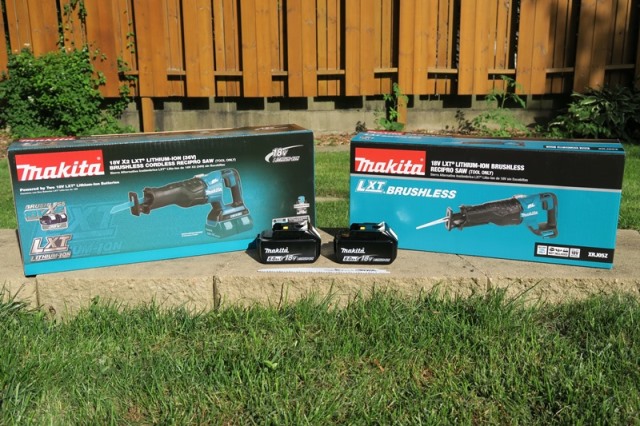

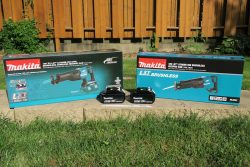
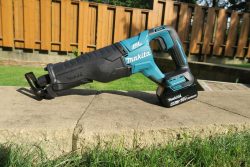
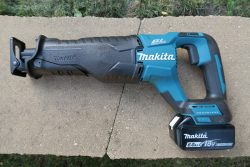
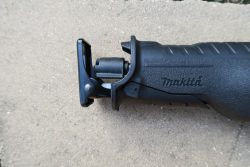
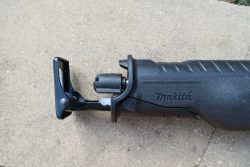
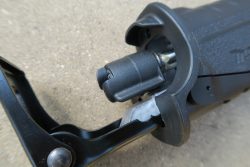
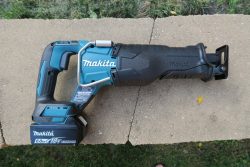
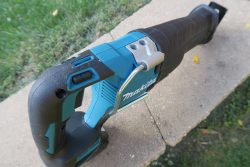
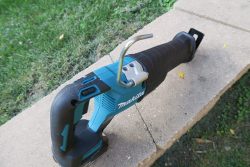
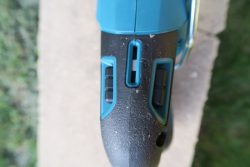
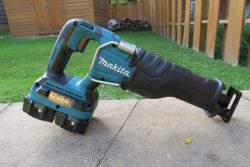
Great tools from makita. 36v is on my wish list. #krugerfam #mondonation? #oztooltalk #we??tools #ourbuild #jimboslice_workshop #knarlycarl #???approved #kc_tool #tiacrew #toolpig #rutter_construction #constructionfasteners #cigaroftheday #aboveaverageliving #?tooltoucher #tonyvolts??
You put a lot of effort into these articles Eric, and it’s much appreciated.
Good Job, Thank You.
#TIACREW !
Glad to see more Makita tools in the reviews. I am really wanting the 18v brushless. Need to come up with a project where I NEED it though. Great article. #TIACREW